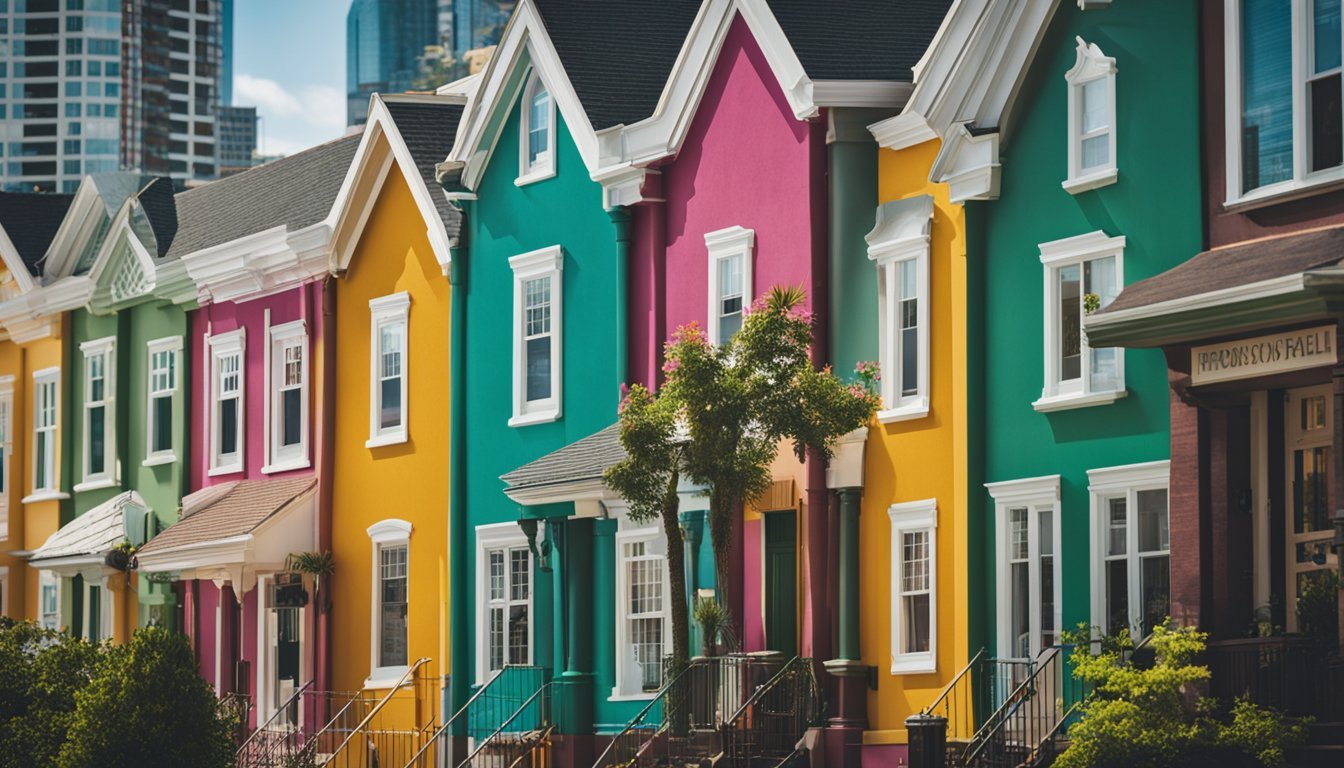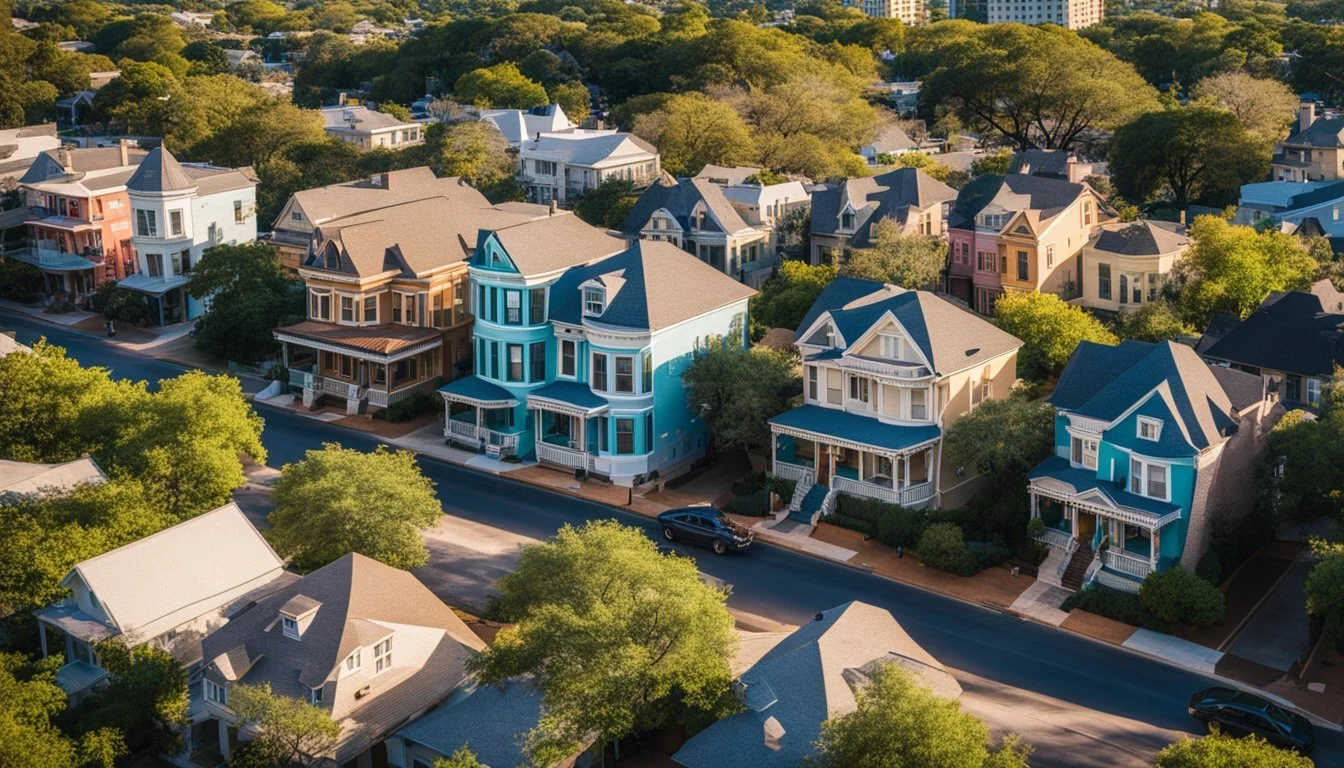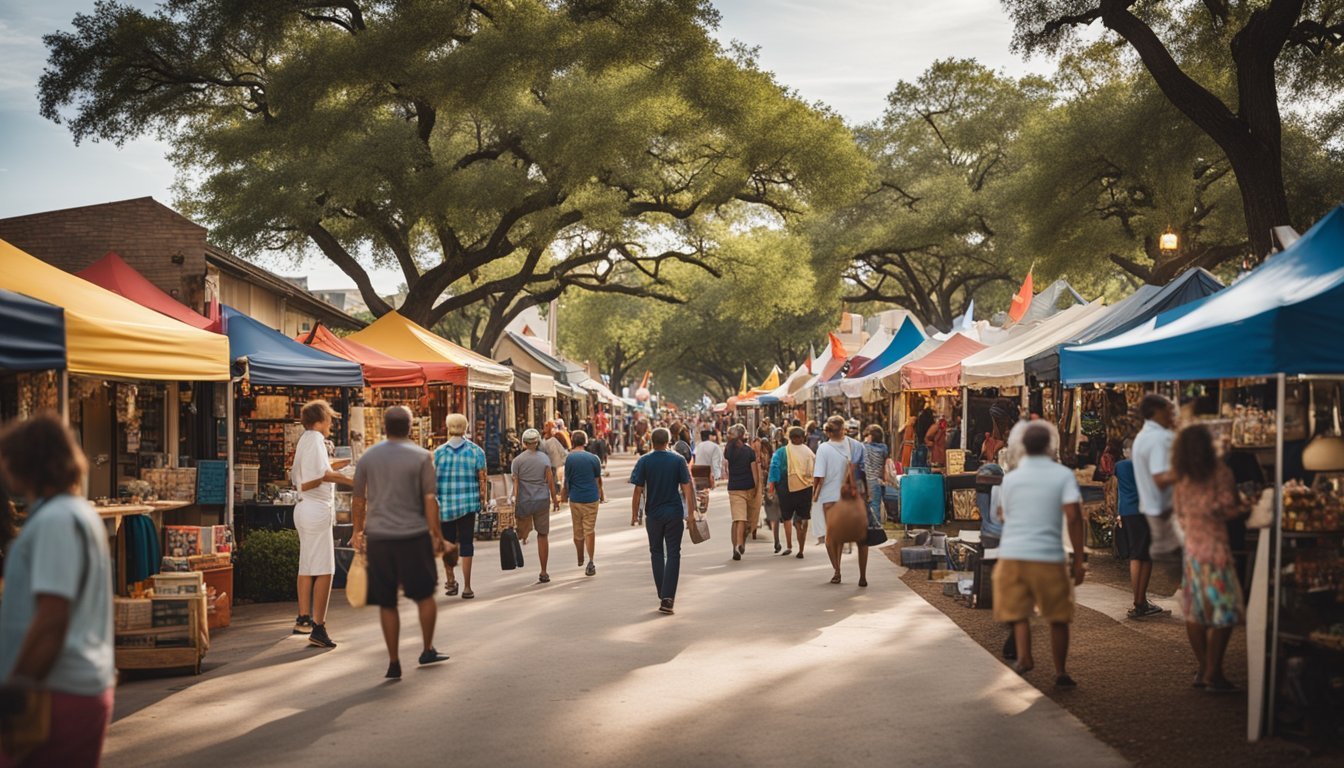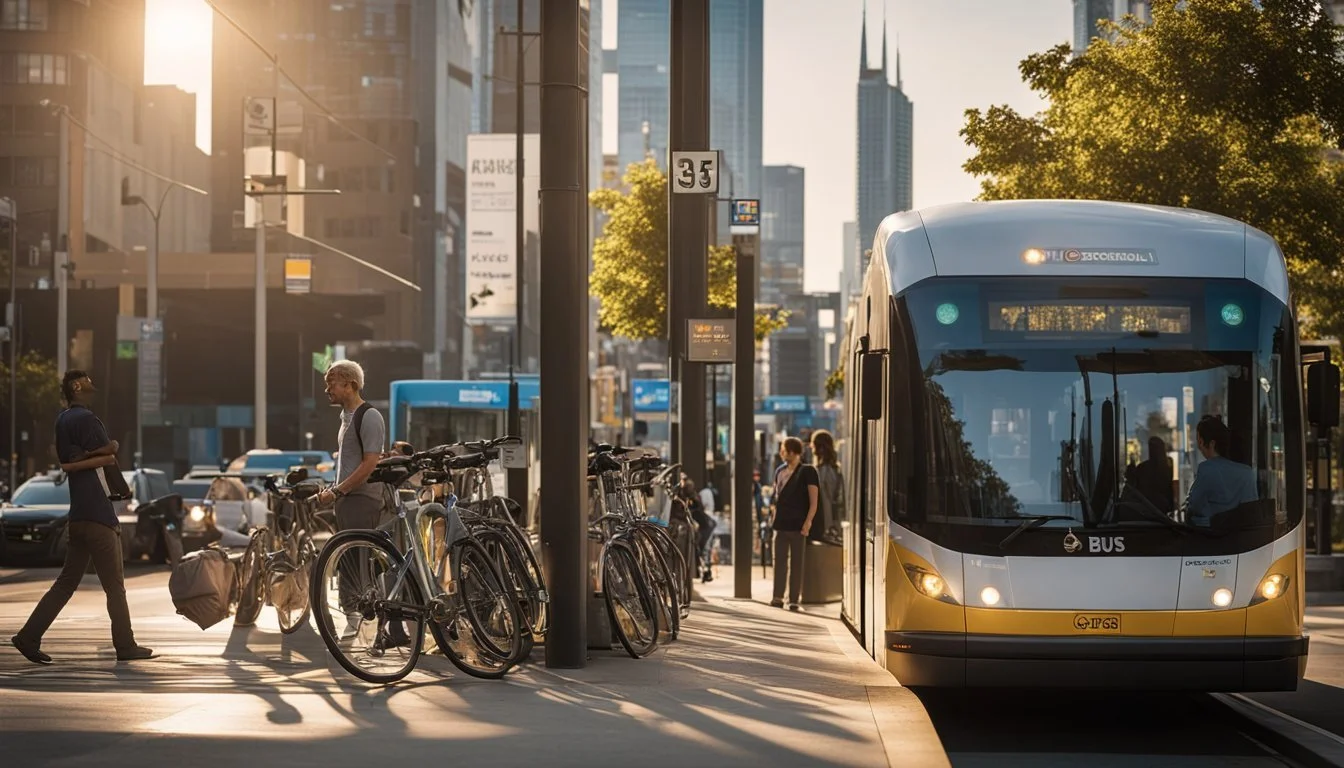10 Things to Know About Austin's Housing Market
Key Insights for 2024
The Austin housing market has been a focal point for both homebuyers and real estate investors in recent years, reflecting broader trends in property values and demand. Known for its dynamic and rapidly evolving landscape, Austin's housing sector offers a unique combination of affordability compared to other major cities and rapid growth spurred by an influx of new residents.
Understanding the current state of Austin's housing market is essential for anyone looking to buy, sell, or invest. With fluctuating prices and a diverse inventory that ranges from tiny homes to luxury apartments, navigating this market requires a keen awareness of ongoing trends and factors shaping supply and demand.
1) Affordable Suburbs like Pflugerville
Pflugerville is one of the top choices for those seeking affordable suburbs near Austin. Located just 20 minutes north of downtown, this suburb offers a mix of small-town charm and accessibility to the city.
The housing market in Pflugerville provides a range of options. From single-family homes to modern apartments, prices are relatively lower compared to Austin’s core. Median home prices are attractive, making it a popular choice for first-time homebuyers.
Schools in Pflugerville are well-regarded, contributing to its appeal for families. The suburb is also known for its community amenities, including parks, trails, and recreational facilities.
Commuting from Pflugerville to Austin is convenient, with multiple transit options available. This ease of access makes it a practical choice for those working in the city but looking for more affordable living arrangements.
Additionally, Pflugerville offers various shopping centers, dining options, and entertainment venues, ensuring that residents have everything they need within reach. The balance of affordability and quality of life makes Pflugerville an attractive suburb for many.
2) Rising Property Values in East Austin
East Austin has witnessed significant property value increases over the past few years. This trend aligns with the overall growth observed in the broader Austin metro area.
In March 2024, the median price for residential homes in the Austin metro area rose to $564,995, a 2.7% increase from March 2023.
There has been a noticeable surge in new and active home listings in East Austin. This influx of listings indicates heightened market activity and growing interest in the area.
Factors contributing to the rising property values include new developments, improved amenities, and a strong local economy. Buyers are increasingly drawn to East Austin's unique culture and proximity to downtown.
Real estate agents report that East Austin homes, particularly those near trendy neighborhoods, are selling faster and at higher prices.
Overall, the upward trajectory of property values in East Austin reflects a robust and dynamic real estate market driven by demand and modern urban development.
3) Historic Homes on Sixth Street
Sixth Street in Austin is known for its rich history and unique architectural styles. Located in downtown Austin, the Sixth Street Historic District showcases many examples of Late Victorian commercial architecture, reflecting the area's cultural and historical diversity.
Michael Paggi, an Italian immigrant, operated a carriage shop at 421 E. Sixth St. from 1875 to 1905. Today, this location is home to Pete’s Dueling Piano Bar.
Another noteworthy site is 522 E. Sixth St., where former enslaved person E. H. Carrington owned a successful grocery store in the late 19th century. Following him was his son-in-law, D. H. Lyons, who continued the legacy.
Within the district, over 30 properties are recognized as local landmarks. These buildings not only highlight the architectural evolution but also tell stories of the people and businesses that shaped Austin’s history.
Exploring Sixth Street's historic homes offers a unique glimpse into Austin's past, making the area a vital part of the city's cultural heritage. This blend of historical narratives and architectural beauty continues to attract visitors and locals alike.
4) Tech Industry Influence
The tech industry has left a significant mark on Austin's housing market. Major tech companies have established a strong presence in the city, attracting a large influx of workers.
This growth has increased demand for housing, driving up home prices. The influx of educated professionals has also spurred the development of modern and upscale residential areas.
The expansion of tech jobs has bolstered Austin's economy, making the city a hub for innovation and development. As tech companies thrive, the housing market continues to evolve to meet the growing needs and preferences of this workforce.
This dynamic has not only influenced home prices but has also impacted rental markets. Rental demand has surged, leading to higher rental rates and a proliferation of new rental properties.
Tech companies often offer competitive salaries, which enables their employees to afford higher-priced homes. This trend has contributed to more diverse housing options, but it also raises concerns about affordability for long-term residents.
The relationship between the tech sector and housing is complex. It brings both opportunities and challenges, shaping the future landscape of Austin’s residential market.
5) Zoning Laws and Permits
Zoning laws play a crucial role in shaping Austin's housing market. These laws determine how land can be used and what types of buildings are allowed in different areas. Recently, Austin officials have made significant changes to reduce housing costs. They reduced the minimum lot size required for single-family homes, attempting to increase housing density.
Though changes have been made, some challenges persist. For instance, even with the reduction in minimum lot size, certain requirements make it difficult to fit multiple units on existing lots. Costs and logistical constraints remain barriers to efficiently increasing the housing supply in some neighborhoods.
The Austin Land Development Code regulates building and development throughout the city. It includes details on how properties can be zoned, imposing restrictions and guidelines for commercial and residential buildings. These regulations are important to maintain the city's aesthetic and safety standards.
Residents and developers need to navigate the city's permit system to ensure compliance with zoning laws. This process can be complex, involving multiple departments and layers of approval. Understanding these requirements is crucial for anyone looking to develop or modify property in Austin.
Austin continuously seeks to balance growth with the need to maintain affordable housing. Zoning and permitting reform efforts are part of this ongoing effort, aiming to make the housing market more flexible and accessible.
6) Local Real Estate Agents
Local real estate agents play a crucial role in navigating Austin's housing market. They possess in-depth knowledge of the neighborhoods, market trends, and pricing strategies. Their expertise can help buyers find suitable homes and negotiate favorable terms.
Agents are well-versed in the legal and procedural aspects of real estate transactions. They assist with paperwork, ensuring compliance with local regulations. This reduces the risk of legal complications and streamlines the buying or selling process.
Real estate agents in Austin often have access to exclusive listings and early information about new properties. This can give their clients a competitive edge, especially in a market with fluctuating inventory levels.
Experienced agents also provide valuable insights on long-term investment potential. They can recommend areas with anticipated growth or highlight properties likely to appreciate over time. This guidance can be vital for both homebuyers and investors.
Choosing the right agent involves checking credentials, reading reviews, and conducting interviews. A good match can make a significant difference in the overall experience and success of the real estate transaction.
For those new to Austin or first-time buyers, leveraging the local expertise of real estate agents can simplify the daunting process of buying a home. Their support and guidance are indispensable.
7) Impact of Festivals and Events
Austin, known as the "Live Music Capital of the World," hosts numerous festivals and events year-round. Major events like South by Southwest (SXSW) and the Austin City Limits (ACL) Music Festival draw tens of thousands of visitors. These influxes of people can temporarily inflate housing demand, as short-term rentals spike during these periods.
Local businesses flourish during festivals, adding economic vitality to neighborhoods. Increased spending in the area can create a ripple effect, benefitting local real estate by boosting property values and attracting more investors and residents.
Homeowners often capitalize on these events by renting out properties at premium rates. This trend contributes to a robust short-term rental market, particularly in central Austin. Both homeowners and investors take advantage of this opportunity, driving more interest in real estate within event-heavy areas.
Increased media exposure from these festivals further elevates Austin's visibility on the national and global stage. As a cultural hotspot, the city becomes more appealing to potential homebuyers, particularly those interested in vibrant, culturally-rich environments. This allure keeps long-term housing demand steady, even as specific event-related spikes may fluctuate.
8) Public Transportation Options
Austin offers several public transportation options that serve its residents and visitors. Capital Metro provides bus and rail services, including MetroBus, MetroRapid, and MetroRail. These services cover key areas of the city, making commuting more accessible.
Project Connect, a proposed $7.1 billion transit expansion, aims to enhance these offerings. It includes light rail lines, transit hubs, and improved bus services. This initiative focuses on expanding connectivity and reducing congestion.
The city's interactive map shows income-restricted housing near transit routes. This helps residents find affordable living options close to public transportation. This alignment supports equitable access to essential services.
Additionally, Austin’s tech growth has influenced transportation planning. Improved transit options are critical to supporting the city's economic development and housing market stability. Diverse public transportation choices play a vital role in shaping Austin's accessibility and livability.
9) Growth of Downtown Condos
Austin's downtown condo market has seen significant growth over the past few years. This area has become highly desirable, attracting both buyers and investors. New high-rise condos built since 2010 have particularly driven this growth.
The average sales price per square foot for these condos exceeds $1,000 as of 2024. This represents a substantial increase from 2019, when the average price was $778 per square foot.
Demand for downtown living remains high, partly due to Austin's booming tech industry and vibrant cultural scene. More people are looking to live close to work, entertainment, and dining options, pushing up demand for condos.
The market dynamics indicate a strong seller's market. Inventory levels suggest that those looking to buy should be prepared to compete. Despite higher prices, many see downtown condos as a worthwhile investment.
New listings and active listings are also on the rise, reflecting growing interest and market activity. Buyers and investors see long-term value in Austin's downtown, given its ongoing growth and development.
This combination of high demand, increasing prices, and a vibrant urban environment makes downtown Austin an exciting place for potential condo buyers.
10) Investment in Green Spaces
Austin has been at the forefront of integrating green spaces into its urban landscape. The city prioritizes developing parks, community gardens, and greenways, which not only enhance the quality of life but also boost property values. These investments reflect a commitment to sustainable urban living.
Developers in Austin frequently incorporate green spaces into residential projects. This trend ties into the broader movement towards eco-friendly housing. Prospective homeowners are drawn to properties with ample green spaces, recognizing the long-term benefits for health, community, and the environment.
The city’s green space initiatives include the preservation of natural habitats and improvement of urban parks. The aim is to create accessible recreational areas for all residents. Austin's approach serves as a model for other cities looking to blend growth with environmental stewardship.
Government policies and local ordinances often require new developments to include plans for green spaces. This enforcement ensures that urban expansion remains balanced with environmental conservation, fostering a more resilient and attractive housing market. Austin’s dedicated investment in green spaces is a key factor that continues to attract new residents and investors alike.
Overview of Austin's Housing Market
The Austin housing market has seen significant changes recently, highlighted by price adjustments and shifts in supply and demand dynamics. This overview will address important trends and historical growth patterns that provide context to the current market situation.
Market Trends
In the first half of 2024, the Austin housing market experienced notable shifts. Median sales prices dropped by 10.9%, with many homes selling for around $454,404. Sales within Austin's city limits saw a 15.9% decrease, suggesting a cooling trend compared to previous years.
Housing supply has slightly exceeded demand, offering a surplus of approximately 5,000 units, which accounts for 0.6% of the inventory as of 2022. This shift is attributed to higher mortgage rates and more stable home prices following the pandemic-era surge.
Historical Growth
Historically, Austin's housing market witnessed explosive growth characterized by soaring home prices and rapid development. Over several years, Austin transformed from a relatively affordable city to one marked by higher living costs and a competitive real estate scene.
Economists often point to the influx of tech companies and job opportunities as significant factors contributing to this growth. Recently, however, the market shows signs of maturity, moving towards a more balanced state with increased stability, ensuring long-term sustainability.
Factors Influencing the Market
Several factors shape Austin's housing market, including population growth, local economic drivers, and city policies. Understanding these aspects can provide valuable insights for potential homebuyers and investors.
Population Growth
Austin's population has been rapidly increasing. People are moving to the city for its vibrant culture, job opportunities, and quality of life. According to the U.S. Census Bureau, Austin's population grew by 33% from 2010 to 2020. This steady influx has led to higher demand for housing, pushing prices upward.
New residents are attracted by Austin’s tech industry, music scene, and outdoor activities. As more companies set up headquarters or expand operations, the population is likely to keep growing, intensifying the need for housing.
Economic Drivers
Austin's robust economy is a significant factor in the housing market dynamics. The city is a major tech hub, home to companies such as Apple, Google, and Tesla. These firms attract a skilled workforce, boosting local incomes and driving demand for housing.
The University of Texas at Austin also contributes by providing a steady stream of educated workers. The strong job market and high wages make it attractive for people to relocate, further spurring housing demand. This economic vitality keeps the market competitive and prices relatively high.
Local Policies
Local policies also influence Austin's housing market. Zoning regulations and land-use policies play a crucial role in determining the availability and type of housing that can be developed. The city's efforts to streamline permitting processes and encourage high-density developments aim to increase housing supply.
Policies targeting affordable housing are critical. The city government has initiated programs to create more affordable units, though high land and construction costs remain challenges. Local initiatives, like the Affordable Housing Bond, seek to balance growth with affordability, impacting both buyers and renters.
Future Predictions
The Austin housing market is poised for notable changes, with insights from experts and potential challenges providing a comprehensive outlook.
Expert Insights
Industry experts forecast continued growth in the Austin housing market throughout 2024. Norada Real Estate reports a 2.7% increase in the median home price from March 2023 to March 2024, indicative of a healthy demand. Real estate marketplace Zillow anticipates further price increases, driven by a strong job market and population growth.
Additionally, inventory levels are increasing but the market still favors sellers. The current inventory stands at 3.8 months, suggesting that while there is more availability, demand remains robust.
U.S. News highlights that although prices have declined from their peak, the median home price in Austin remains high relative to the national average, reflecting ongoing desirability of the area.
Potential Challenges
Despite positive trends, there are several challenges on the horizon for the Austin housing market. Increased interest rates could dampen affordability for potential buyers, leading to slower market activity. Redfin data points to a 4.2% decrease in median home price year-over-year, signaling potential volatility.
Supply chain issues and rising construction costs could also slow new home development, restricting inventory growth. Moreover, economic uncertainties may contribute to fluctuating buyer confidence, impacting sales volumes.
Affordability remains a pressing concern, with median prices still significantly higher than the national average, which may deter some first-time homebuyers. Rising property taxes are another concern for existing homeowners and potential buyers alike, potentially affecting long-term market stability.




